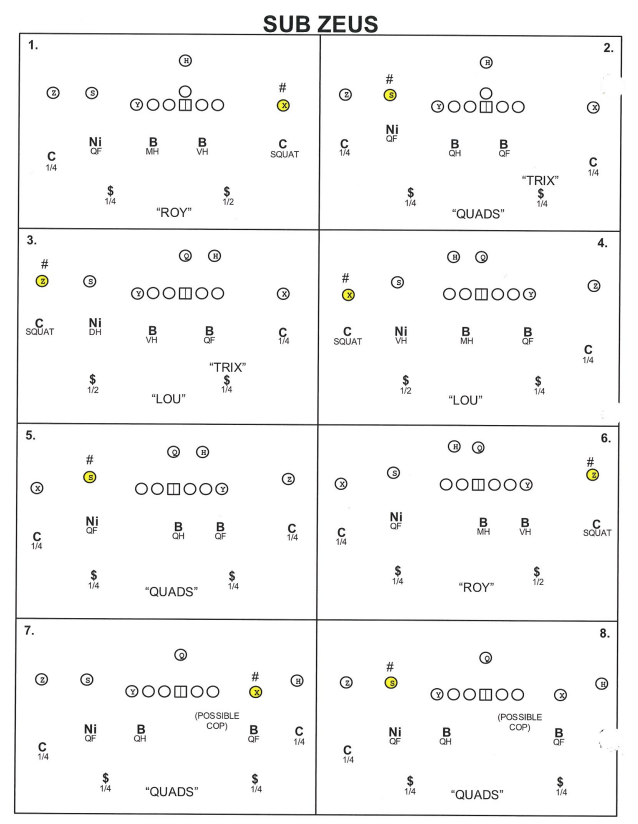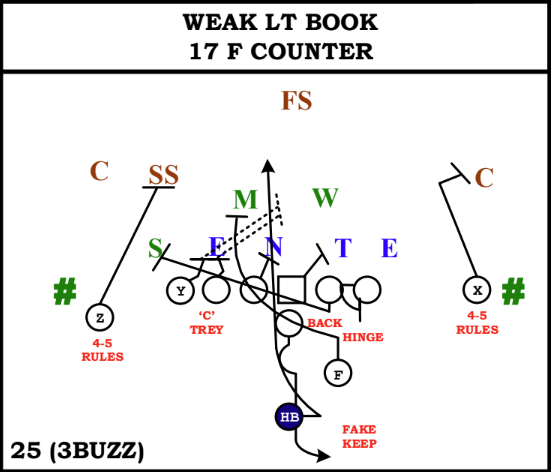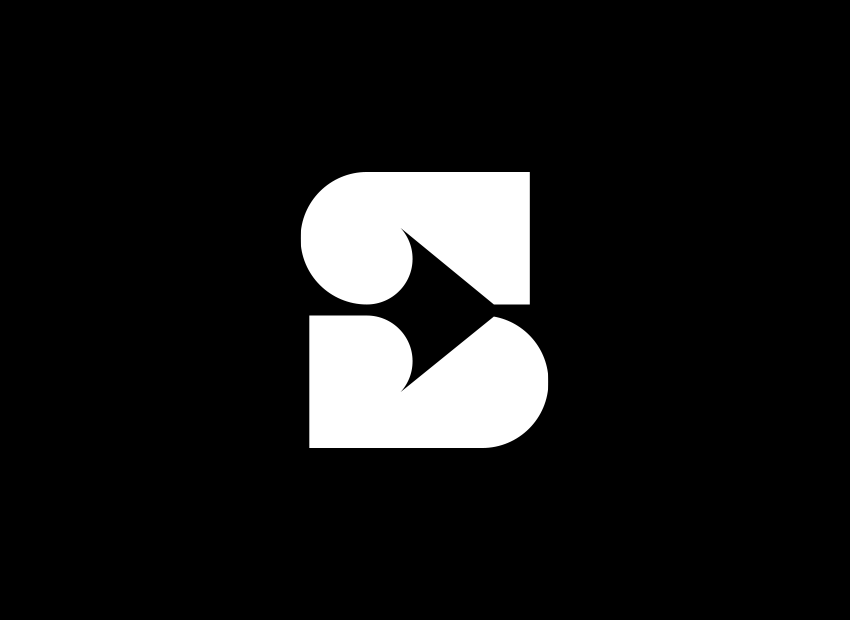For the first half of the season, I will be bringing you The Thursday Three. This article will cover three schematic points related to the NFL; the three points may connect to a game plan, specific concepts, or something else interesting across the league.
This week I am covering the coverage concepts Zeus and Ring, the run concepts Counter Solid and Duo Kick, and Cover 2 Invert.
Zeus and Ring
Two high safety structures give the defense extra flexibility when figuring out how to deal with star wide receivers. Defenses can benefit from coverage flexibility to deal with different route distributions, but the defense can also use specific concepts that change based on where a star receiver is lined up. Bill Belichick’s 1 Double is a famous example.
Sean Desai, defensive coordinator for the Philadelphia Eagles, seemed to have brought out two Fangio world classics when trying to deal with Justin Jefferson: Zeus and Ring.
Zeus


Zeus is an adjustable zone coverage that ends up as Cover 4, Cover 6, or Cover 8 (information on Cover 6 and Cover 8 from last week’s Thursday Three is hyperlinked here), depending on where the star receiver lines up.
If the star receiver is the outer most receiver, the defense will play Cover 2 to that side and Cover 4 to the other side. This gives the defense low and high coverage on the star receiver with a cornerback underneath and a safety over the top.
If the star receiver is lined up inside, the defense will be playing Cover 4 all around. It can be a bit more aggressive than a simple zone coverage as the quarters flat player and the quarters safety can functionally bracket the star receiver.
It is important to note that we cannot say with 100% certainty that the below snap is a Zeus call because we did not sit in the Eagles defensive meeting room. Still, this is how it would look if the call was Zeus 18 with Justin Jefferson at the bottom of the screen:
Looks like Zeus vs. a fast 4 https://t.co/JwnyCJKkBC pic.twitter.com/Pkk1XKSkth
— Shawn (@SyedSchemes) September 20, 2023
Ring

Ring is an adjustable man coverage concept that changes how the safety to the side of the star receiver plays based on where they line up. Regardless of where the star receiver lines up, the coverage to the other side will be man coverage with a quarters technique from that side’s safety.
If the star receiver is the outer most receiver (and is not in a stack with another receiver), the safety to the star receiver will play a deep half technique over the top. This ensures a cornerback in the receiver’s face with a safety over the top similar to Zeus.
If the star receiver lines up as an inside receiver, the safety to that side will play a quarters technique. This again gives the defense multiple eyes on the receiver.
Jefferson is at the top of the screen here:
One of the ways the Eagles devoted extra resources to Justin Jefferson on defense yesterday was with Ring (details below). Ring is an adjustable man coverage that ensures a safety over the top of a star WR wherever they line up, with a 1/4s safety away pic.twitter.com/CZHwFryWVn
— Shawn (@SyedSchemes) September 15, 2023
Counter Solid and Duo Kick
As defenses continue to try to set the edge in the run game as a response to the outside zone boom, offenses are adapting with two concepts that have spread across the league: Counter Solid, and Duo Kick.
A special shout out to Bobby Peters who passed along names for the concepts. I think you would appreciate his work.
Counter and Counter Solid
Counter is a run play that uses two pullers from the back side of the formation with standard assignments. The first puller is kicking out the end player on the line of scrimmage. This is generally a defensive end or an on the ball outside linebacker. The second puller works inside of the first puller’s block and wraps up to the play side linebacker.
The two pulling players can come from a variety of different positions and some combinations include: guard + tackle, guard + fullback, guard + tight end, and center + tackle.

Below, the 49ers are running Counter (they would call this Stutter since it is to the weak side) to top of the screen. Note the back side guard kicks out the end player on the line of scrimmage and the second puller works inside of the kick out to the linebacker.
Kyle Juszczyk moving an LB on counter pic.twitter.com/orhJXpgaR9
— Shawn (@SyedSchemes) January 18, 2022
Counter Solid is a variation of Counter that involves no offensive linemen pulling. It also takes advantage of fast motion at the snap to create a crease in the defense.
The two pullers on Counter Solid are a fast motion player coming from the opposite side of the formation to kick out the defensive end and a tight end or fullback from a wing or off set position working to the play side linebacker. With no offensive linemen pulling, the whole line can wash down the defense as they pave the way for the running back. The fast motion is used with other concepts within the Shanahan run game and is a creative curveball.
Pretty counter solid rep from SF pic.twitter.com/0lL2Fu6oiv
— Shawn (@SyedSchemes) September 17, 2023
More teams looked to join in on the parade early in the season.
Packers running 13p counter solid pic.twitter.com/7gVpEPKGm3
— Shawn (@SyedSchemes) September 17, 2023
Duo and Duo Kick
Duo is a downhill run play that generally involves two vertical double teams at the point of attack. The run almost always includes at least one tight end (though you will see it from double and triple tight end sets) and invites the linebackers inside. The running back frequently bounces the run outside leaving them 1 on 1 with a cornerback in open space.
🧵 McVay/’20 Rams DUO Thread 🧵
-21% of handoffs (106/501) for 4.66 YPC
-75x from 11 personnel, 15x from 12p, 16x from 13p
-Two double teams at the point of attack
-WRs must block, OL must play on insteps
-5 variations on the same concept below plus a Play Action Pass— Shawn (@SyedSchemes) August 11, 2022
Duo Kick uses the same fast motion that we saw above in Counter Solid to block the defensive end. The rest of the blockers can then work backwards from there to block down on the defensive line and linebackers. Unlike Counter Solid, there are no pullers involved.
Like Counter Solid, Duo Kick opens up a crease in the defense by kicking the edge player out with momentum. The running back can once again attack vertically in a hurry as the defense tries to work through the blocking.
Rams running Duo Kick pic.twitter.com/4xQKRH1yJQ
— Shawn (@SyedSchemes) September 16, 2023
Cover 2 Invert
Cover 2 is a zone coverage that includes two deep safeties covering their respective deep halves of the field. Underneath, cornerbacks can challenge receivers as they squat in the flat. Tampa 2 (pictured below) includes a middle of the field runner that covers a potential hole in the deep middle portion of the defense.

Cover 2 Invert changes the responsibilities in the secondary by having the cornerback cover the deep half of the field. The flat player to that side may be a safety or another defender. This can be used as a disguise to confuse the quarterback but also to discourage quick vertical throws to an outside receiver while having a different defender play as the low coverage piece. It is not a true double team, but Invert can have the effect of having two defenders over one threat.
Teams may run 2 Invert to one side or both sides of the field and it generally includes a quick rotation from the secondary. In the below example, the Ravens are running 2 Invert to the top of the screen. Note the cornerback is playing the deep half to that side of the field, while the bottom of the screen expresses as a standard Cover 2.
Ravens drop from 7 on the line to a 2 invert sim pressure pic.twitter.com/xHw9GZvNqE
— Shawn (@SyedSchemes) September 18, 2023
Below, the Bengals are running 2 Invert to the bottom of the screen. Note the cornerback once again bailing out fast to cover the deep half of the field.
Bengals 2 invert creeper gets a free runner, and Lamar Jackson ends up with positive yards on the play pic.twitter.com/Ehxo1zdxgo
— Shawn (@SyedSchemes) September 18, 2023
2 Invert is not an every down coverage and is often paired with pressure. It can put cornerbacks in a precarious situation as they are asked to cover receivers deep with available space inside.
3rd and 17, Mahomes fits it in between the 2 invert corners pic.twitter.com/SVAvWEZA0L
— Shawn (@SyedSchemes) September 8, 2023
